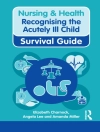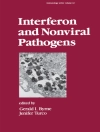Non-alcoholic fatty liver disease, or NAFLD, represents a spectrum of pathologic liver histologic findings ranging from the simple accumulation of fat, known as steatosis, to nonalcoholic steatohepatitis and cirrhosis. It is estimated that NAFLD in all of its forms would have a 20% prevalence worldwide, but the evidence suggests a higher rate for developed countries, exceeding 30% for the US general population. Major risk factors for NAFLD, such as ageing, obesity and insulin resistance, are projected to increase in the following decades, causing the prevalence and relevance of NAFLD to rise in the future. In obese populations and type 2 diabetes patients, the prevalence of this disease exceeds 70%. NAFLD has been called the "silent epidemic" for its lack of symptoms, relatively complex diagnosis and its deleterious effects. The association between NAFLD with cardiovascular diseases, energy metabolism disorders and polycystic ovarian syndrome has promoted the inclusion of this liver pathology within the metabolic syndrome. From a biochemical point of view, current evidence suggests the existence of a bidirectional causal relationship between NAFLD and oxidative stress, where various alterations energy metabolism and important inflammatory components are involved. An abnormal glucose and fatty acid metabolism lead to glucotoxicity and lipotoxicity, respectively, which promote oxidative stress through different pathways. Oxidative stress induces the expression of pro-inflammatory mediators, including transcription factors and cytokines, which trigger an immune activation, a key step in the transition from simple steatosis to steatohepatitis. An early diagnosis and optimal therapy are essential for NAFLD treatment. First-line treatment of NAFLD focuses on lifestyle changes. Weight reduction through an increase in physical activity and/or nutritional management is considered safe and effective, but pharmacological management of common comorbidities such as hyperglycemia, dyslipidemias and hypertension are also essential. The key role of oxidative stress in NAFLD pathophysiology suggests that antioxidant interventions based in natural substances such as polyphenols would be effective. Recently, it was shown that the antioxidant properties of these compounds are beyond their free radical scavenging. This book presents an update of research advances contributing to a better understanding of relevant clinical models of NAFLD, particularly, the disorder in energy metabolism and the role of oxidative stress. It also highlights the clinical and pathophysiological association between NAFLD and the metabolic syndrome, and presents an overview of current diagnosis and treatment and the future avenues for the management of this disease.
Ramon Anibal Rodrigo Salinas
Nonalcoholic Fatty Liver Disease [PDF ebook]
New Insights
Nonalcoholic Fatty Liver Disease [PDF ebook]
New Insights
Beli ebook ini dan dapatkan 1 lagi PERCUMA!
Format PDF ● Halaman-halaman 151 ● ISBN 9781634842181 ● Penyunting Ramon Anibal Rodrigo Salinas ● Penerbit Nova Science Publishers ● Diterbitkan 2016 ● Muat turun 3 kali ● Mata wang EUR ● ID 7226381 ● Salin perlindungan Adobe DRM
Memerlukan pembaca ebook yang mampu DRM












